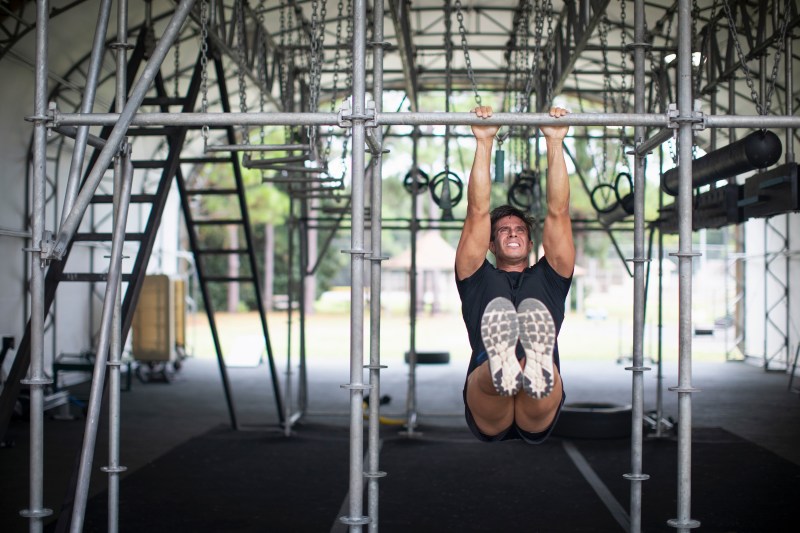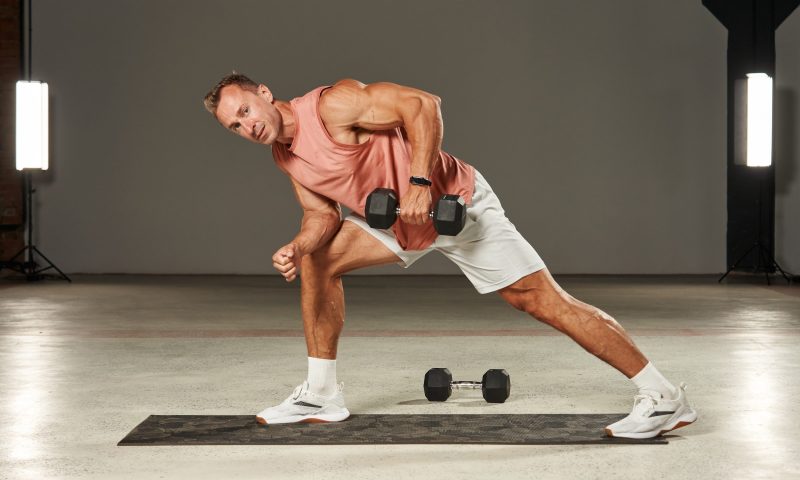
Pull-ups are a supreme exercise for bulking up and strengthening your upper body. You use your pulling muscles to pull your entire body weight up until your chin is just above the bar. A pull-up is more difficult and advanced than other exercises like chin-ups. We’ve found the six best exercises to help you get better at pull-ups so you can obtain the most benefit from this advanced movement.
What are the benefits of pull-ups?

The pull-up showcases your strength as you haul yourself up to the bar; it also specifically targets your pulling muscles, such as your trapezius and biceps. Pull-ups are an upper body strength training exercise that depends on the shoulder, back, arm, and grip strength, as well as a stable core.
In addition to enhancing your strength and fitness, performing pull-ups might improve your overall physical and mental health. Resistance training exercises like pull-ups have been proven to:
- Promote bone development
- Boost heart health
- Boost mental health
- Reduce visceral fat
- Help in the management of type 2 diabetes
1. Lat pulldown

Lat pulldowns are one of the best pulling exercises for targeting your lats, biceps, shoulders, and rear deltoids. This movement effectively engages your back muscles and improves your grip strength as you grip and pull the bar or cable down. You can perform lat pulldowns with resistance bands or a cable machine either sitting down or standing up.
How to perform lat pulldowns:
- Sit down facing the bar.
- Grip the bar with a wide overhand grip (slightly wider than shoulders-distance apart).
- Pull the bar down towards your chest (try to keep your chest up as you pull).
- You should feel your shoulder blades squeezing together as the bar reaches your chest.
- Carefully release the bar back up with control.
- Repeat for your desired number of reps.
2. Hanging hold

A hanging hold or dead hang helps you work your way up to performing a pull-up because it’s essentially the bottom part of the pull-up movement. The hanging hold pose builds stability and grip strength as you hold yourself in this position. Beginners typically aim to hold the pose for 10-30 seconds, while intermediate exercisers often aim for 30-60 seconds. Advanced exercise enthusiasts and elite athletes might hold the pose for 1-2 minutes or longer.
How to perform a hanging hold:
- Grip the bar and hang down from the bar, relaxing your shoulders and lats.
- Squeeze your lats and pull your shoulders down.
- Hold the position for 10-60 seconds, depending on your fitness level.
- Depending on where you’re performing the exercise and the height of the rings or bar, you might need to lift your legs to make sure you’re hanging up off the ground and holding your entire body weight.
3. Bent-over row

Your lats and biceps are key for performing an effective pull-up. Bent-over rows or dumbbell rows fully engage your lats and biceps as you pull the weights up. You can perform bent-over rows using a barbell or two dumbbells.
- Start in a lunge position with your left foot forward and your right foot back.
- Hold the dumbbell in your right hand.
- Lift or pull the weight up to your chest, making sure your elbow is bent at a 90-degree angle.
- Try to engage your core throughout this movement.
- Lower the weight back down.
- Repeat for your desired number of reps.
- You can also repeat on the other side.
4. Seated row

Seated rows emphasize your upper body pulling muscles and improve posture. The name is apt because the movement involves a rowing motion resembling rowers on the water. You can use a resistance band or a seated row machine. The seated row targets your:
- Latissimus dorsi in the middle of your back
- Rhomboid muscles in between your shoulder blades
- Trapezius muscles in your neck, shoulders, and upper back
- Biceps brachii in the front of your upper arm
How to perform a seated row:
- Adjust the chest and seat pad and sit upright on the bench with your knees slightly bent and your feet on the footpads.
- Lean forward to grab the handle or cable.
- Engage your core and pull your shoulders back and down.
- Bend your elbows and pull the handle or cable in toward your body.
- Your shoulder blades should squeeze together as you pull.
- Extend your arms out and slowly release the cable or handle back to the starting position.
- Repeat for your desired number of reps.
Top tips: Try to keep your elbows tucked in, maintain a neutral back, and avoid rounding or hunching your spine.
5. Assisted pull-ups

Assisted pull-ups are an excellent practice exercise to work your way up to a traditional pull-up. You can use a pull-up machine or a resistance band to assist you and counter some of your body weight. Assisted pull-ups are the right place to start for those not yet ready to master the classic pull-up.
How to perform an assisted pull-up:
- Add weight to the machine, bearing in mind that adding more weight to the assisted pull-up machine makes the exercise easier. The machine weight counters your body weight to help you lift yourself up to the bar.
- It’s best to start with too much counterweight rather than too little so you can determine what’s best for you.
- Kneel or stand on the platform and make sure you’re properly positioned and balanced.
- Reach your arms straight up to grip the handles on either side of the machine with an overhand grip.
- Pull yourself up as you would on a regular pull-up bar, using the machine weight to support you until your chin is level with the top of the handles.
- Slowly lower yourself back down to the starting position.
- Repeat for your desired number of reps.
6. Push press

The push press is another power-lifter favorite that works your glutes, quad, and upper body as you lift the weight up over your head. While it doesn’t involve a pulling motion, the push press strengthens and engages your back and core, which are important for performing pull-ups. You can perform a push press with dumbbells, a barbell, or kettlebells.
How to perform a push press:
- From a standing position with your feet about hips-distance apart, carefully bring two dumbbells up to your shoulders.
- Brace your core and bend your knees.
- As you straighten your legs back to the standing position, immediately lift the weights up over your head, extending your arms up above you.
- Slowly lower the weights back to the starting position.
- Repeat for your desired number of reps.



